As the Japanese forces advanced into Northern Malaysia during the World War II, the British Army retreated by scattering incendiary bombs like rain. The starving village residents began looting the warehouses for food. Amidst the chaos, a man named Ah Ham stumbles upon a “melon-shaped teapot” which was lying on the floor of his hideout – as he go down to pick it up, he suddenly hears a shrapnel from a bomb whizz past his head, it misses him by a hair’s breadth. The life-saving moment made him believe that his find was endowed with magical powers, and it soon became his relentless companion for years. Whenever he shares the story of his miraculous escape from death; he serves his guests in the very teapot.
Today, the lucky melon teapot that was once owned by Ah Ham sits on display at the Royal Selangor Visitor Centre, located at Setapak Jaya, a suburb only 30 minutes from Kuala Lumpur city centre. Royal Selangor is a Malaysian manufacturer and retailer of pewter and silverware products, but also the largest of its kind in the world.
What is Pewter?
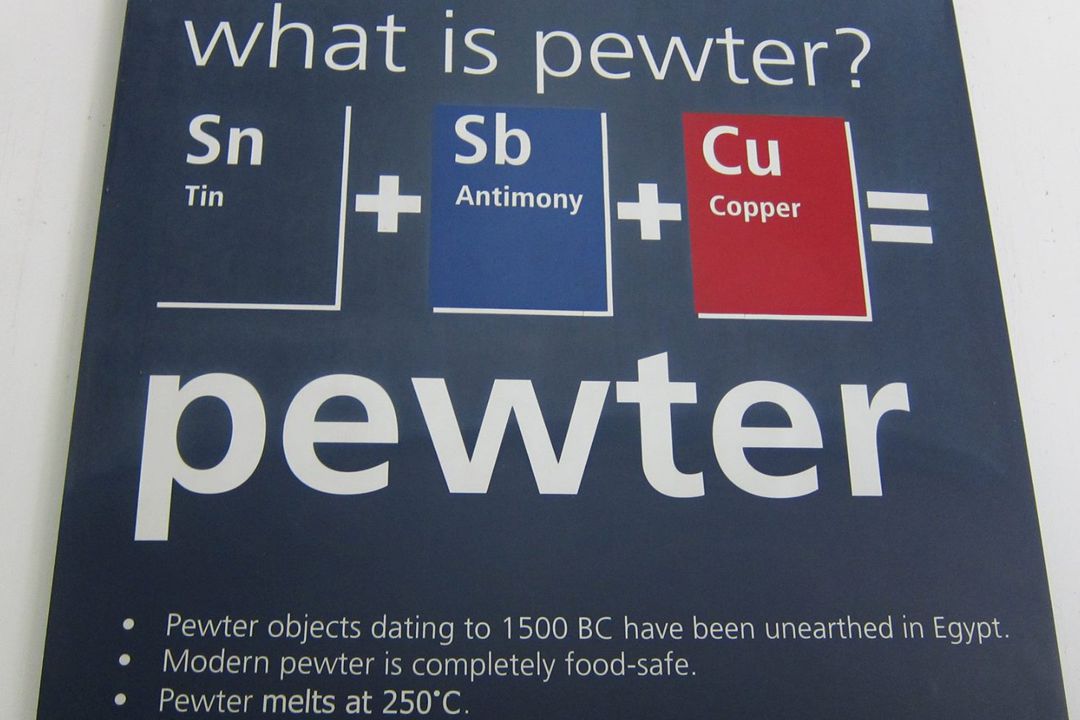
Pewter is a malleable tin-based alloy which was first used in early Bronze Age. The earliest piece of pewter was first found in 1500 BC at an Egyptian tomb, it remained as the chief tableware until porcelain. Pewter has a low melting point, between 170 to 250 °C, depending on the exact metal mixture.
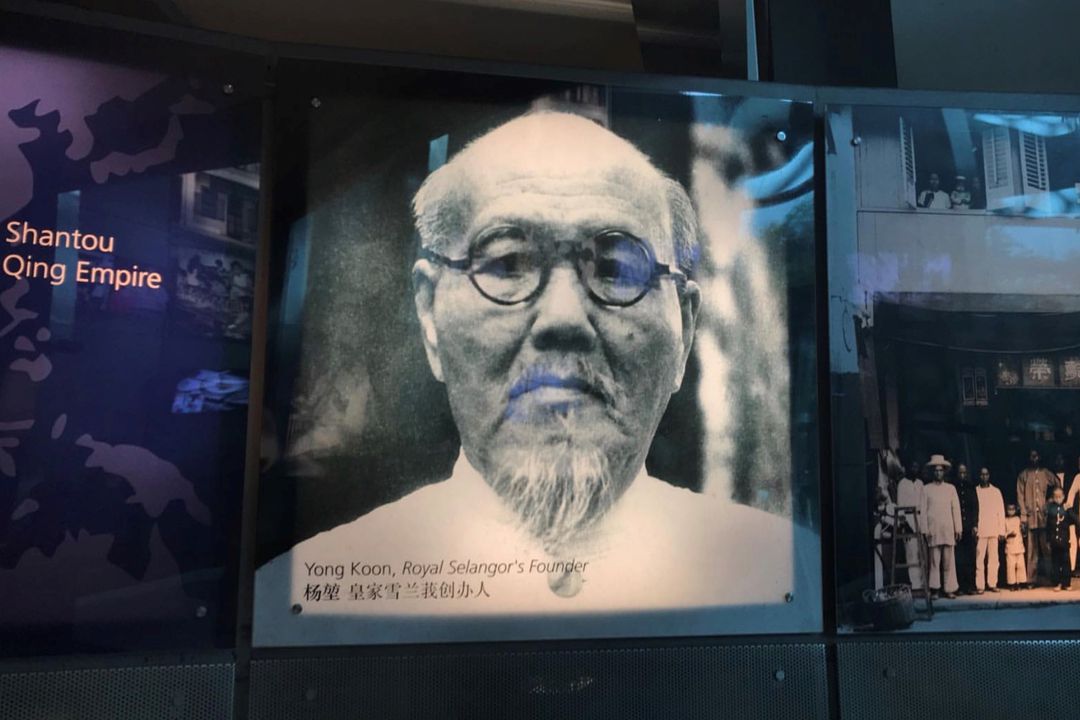
Mr. Yong Koon, founder of Royal Selangor.
The tale of Royal Selangor, its humble inception and intricate history is a testament to Malaysia’s extraordinary economic transformation. In the late 19th century, the discovery of tin in Kuala Lumpur prompted a rush of tin miners from China. In the year 1885, a young Chinese pewter-smith named Yong Koon set sail from his hometown Shantou, China to Malaya. Back then, he would have never thought that his pewter-smith skills would one day be the success story of one of the world’s best-known pewter companies.
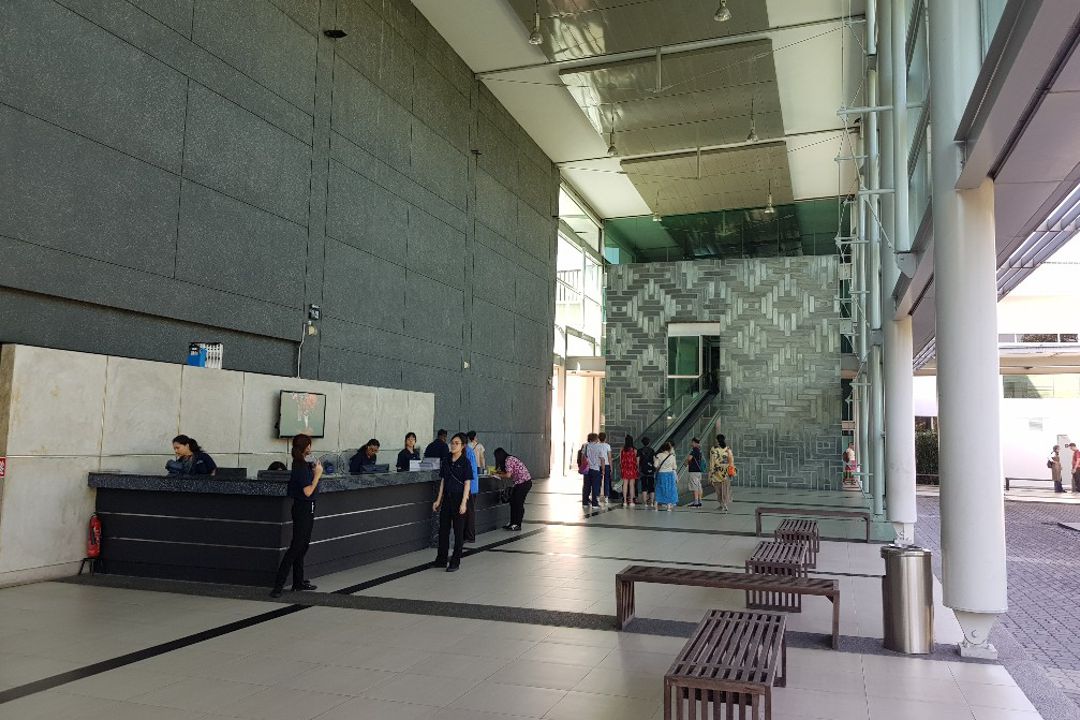
During my recent trip to Kuala Lumpur I had the pleasure of visiting the Royal Selangor Visitor Centre.
On arrival at the visitor centre, Jasmine, my guide walked me through the exhibits and the mini gallery where I was able to see some of Yong Koon’s personal items and his actual smithing tools. I was given a detailed introduction of the company and how it grew from a small shop to the conglomerate they are today.
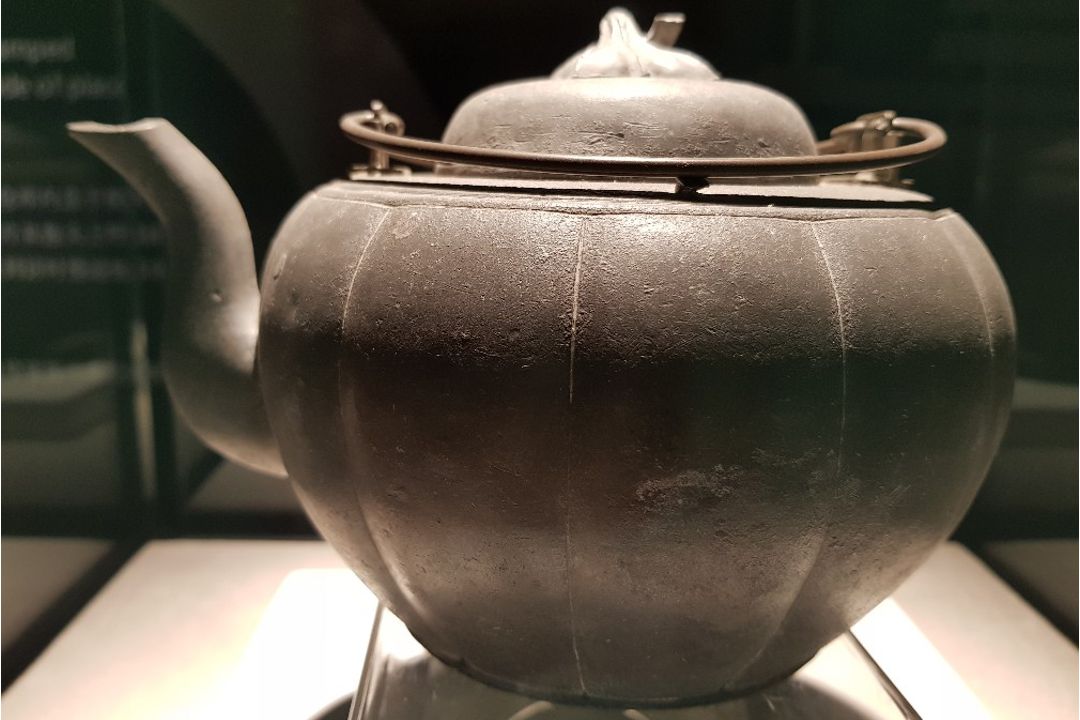
The lucky melon-shaped teapot that saved Ah Ham during World War II.
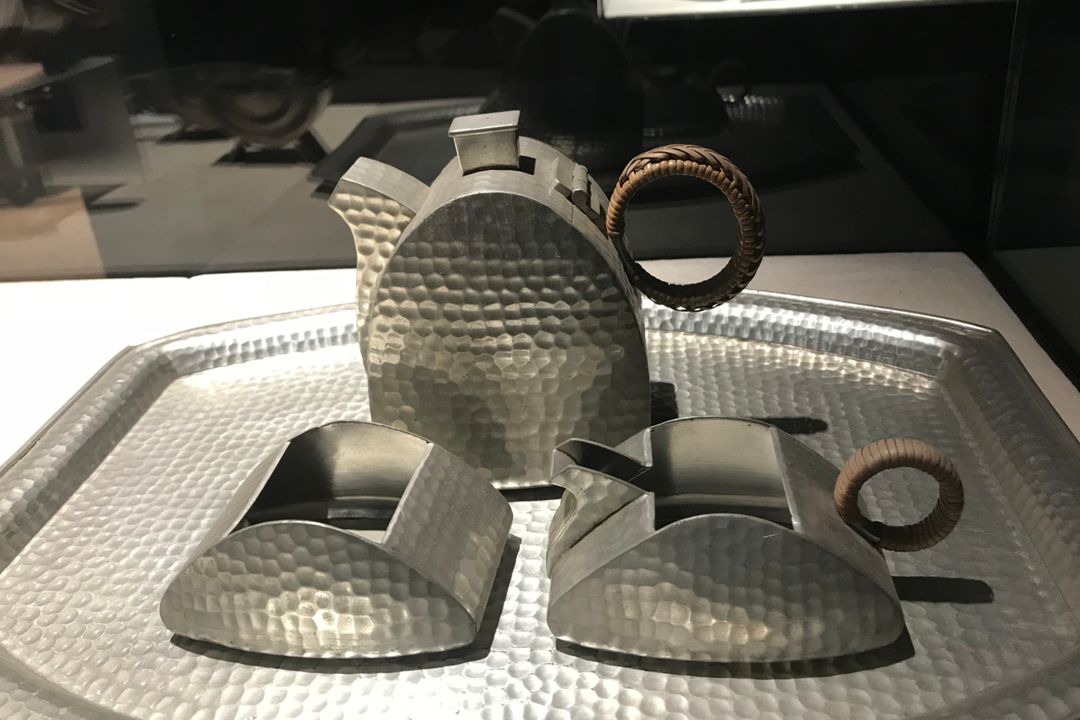
Pewter based coffee and tea set produced between 1930 – 1950.
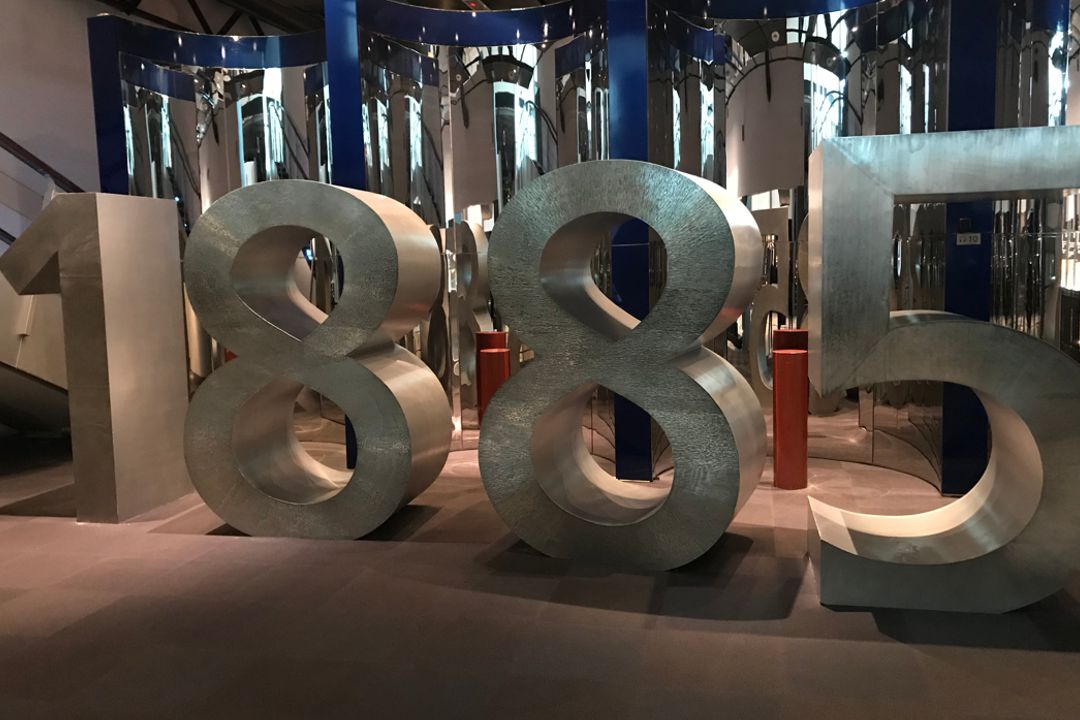
Royal Selangor was founded in 1885. Each digit has a unique design and texture.
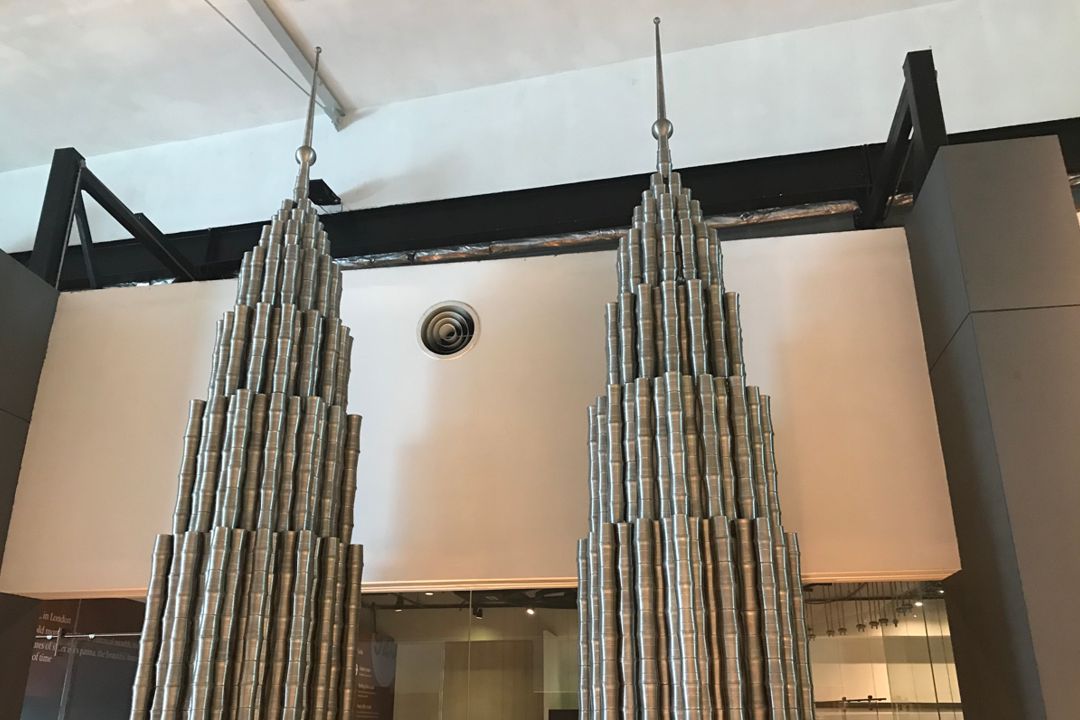
A model of the Petronas Twin Towers made from 7000 pewter tankards.

Yong Koon branded his pieces with this touchmark which consists of 4 Chinese character – Yu He Zu Xi (Jade, Peace, Pure, Tin).
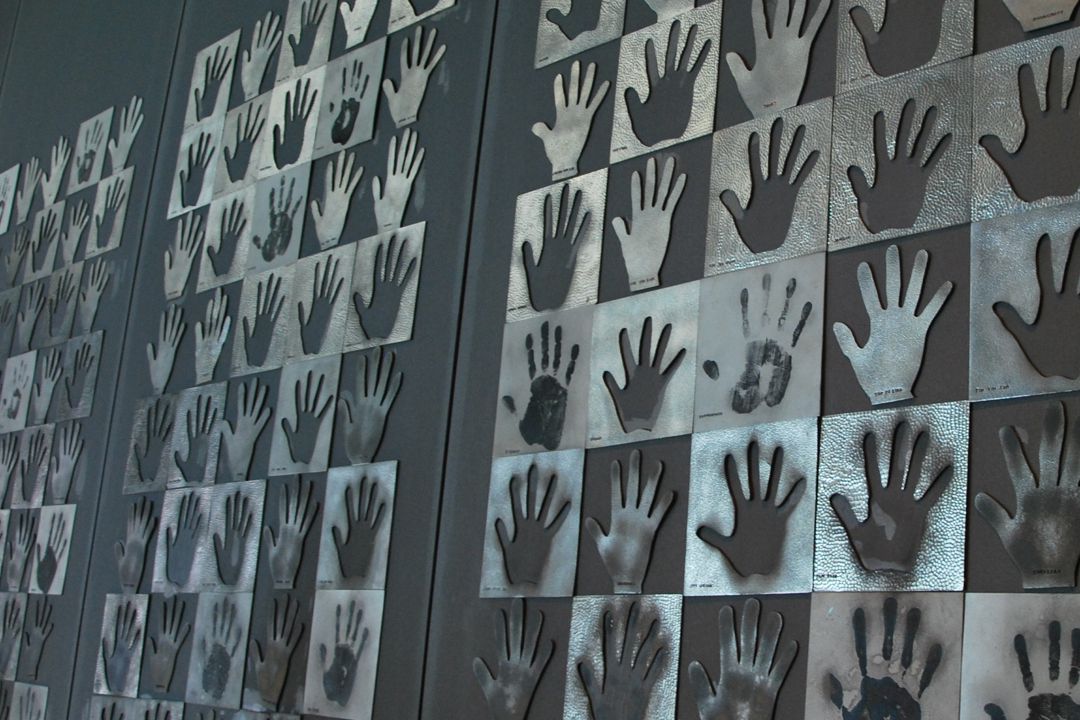
Acknowledging employees of Royal Selangor Pewter Manufacturing on completion of 5 years by taking their hand prints on metal.
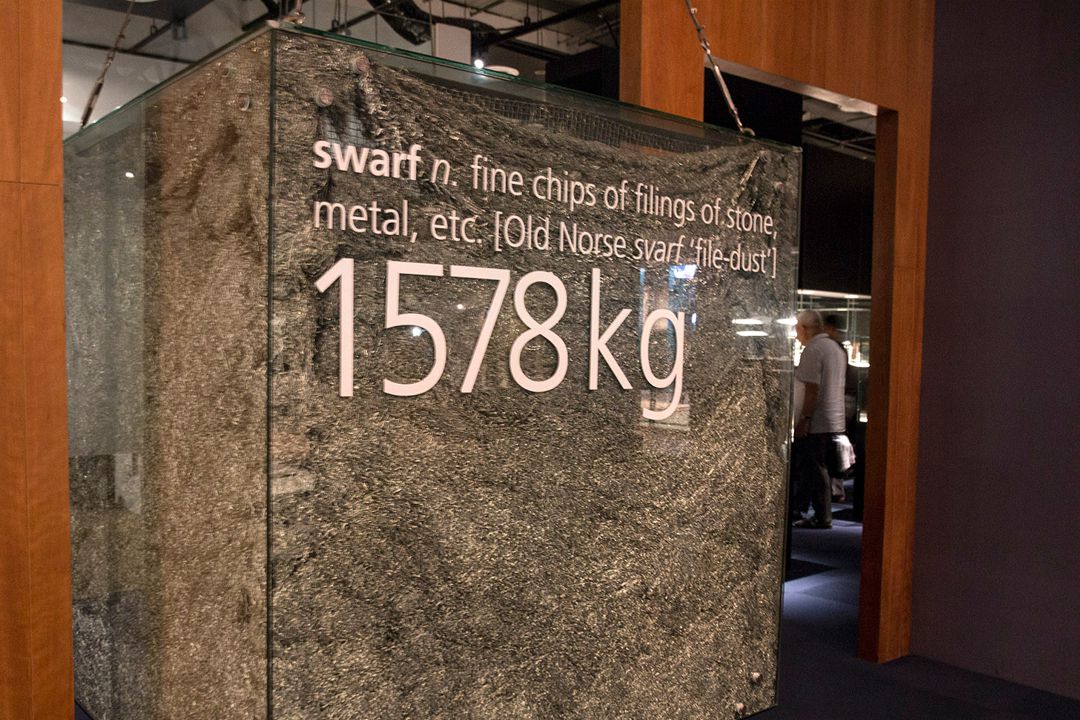
A hanging container weighing 1,578kg’s of pewter swarf. It’s recycled and there is absolutely no waste.
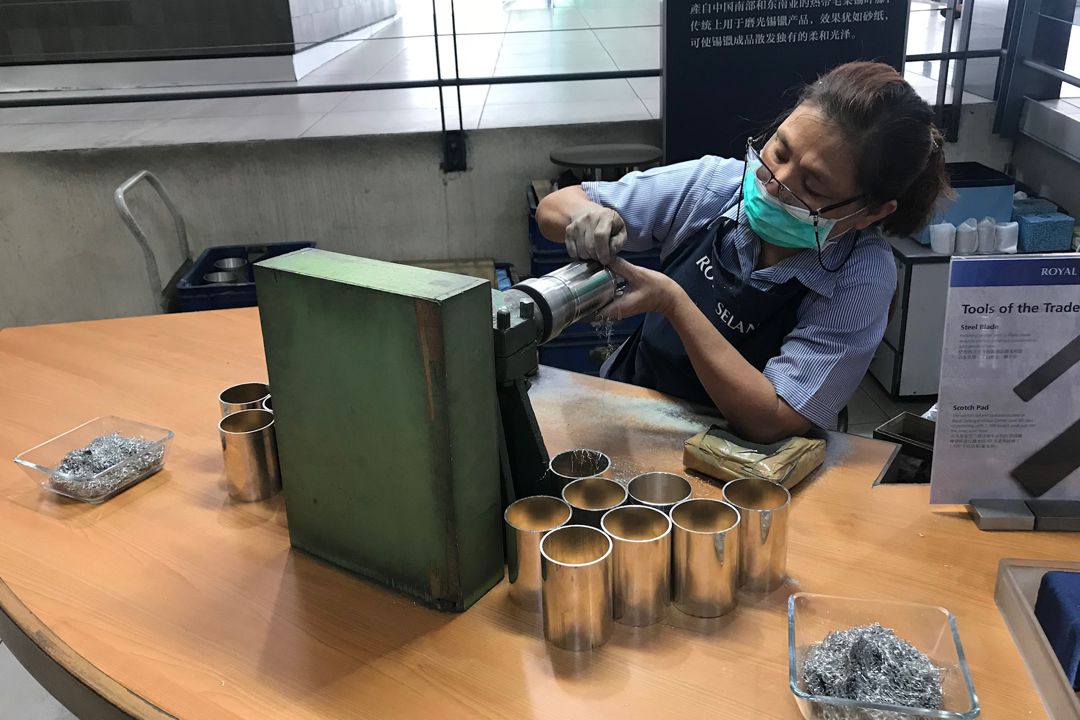
A skilled worker demonstrating the preparation of pewterware.
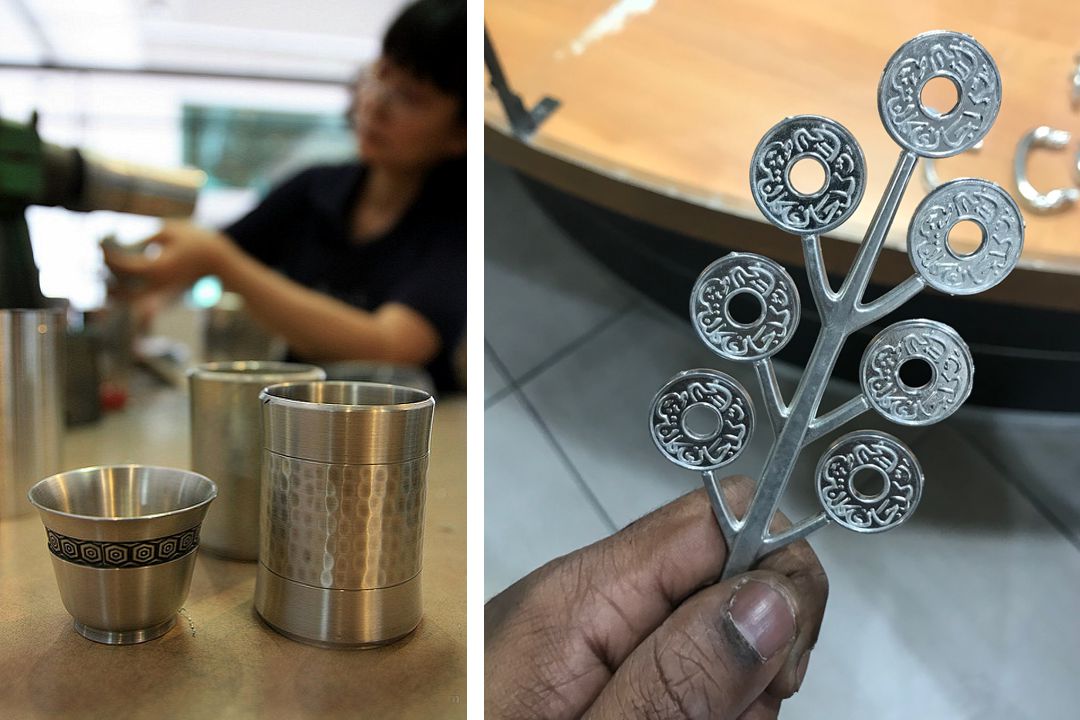
Aren’t they beautiful?
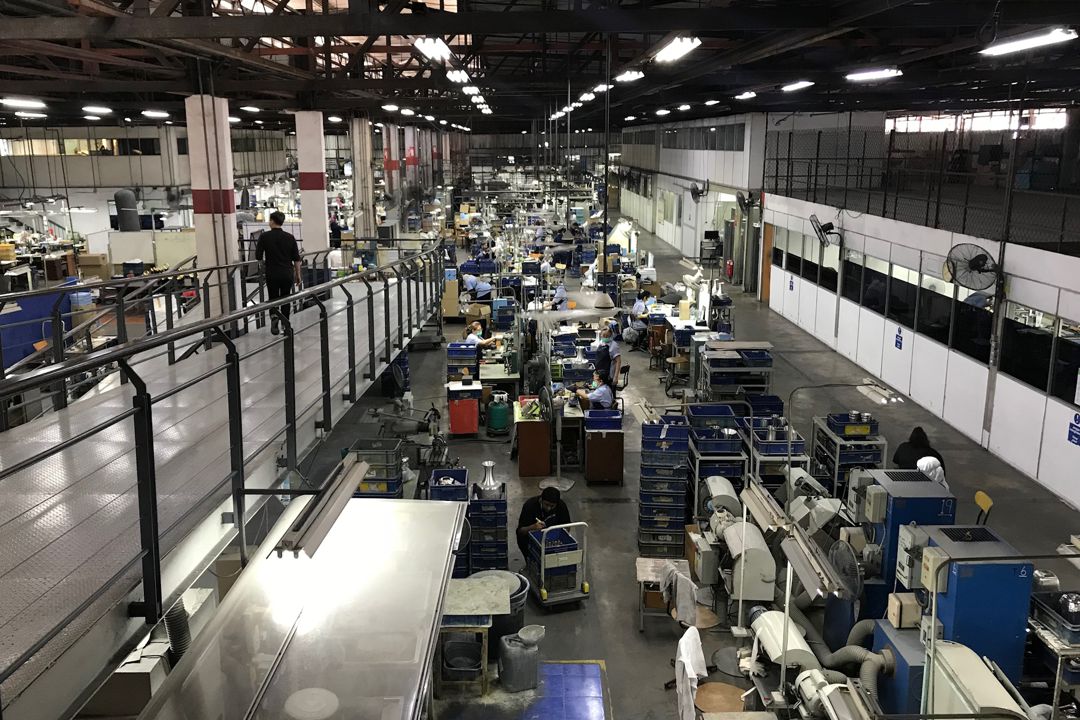
Royal Selangor employees a workforce of 600 people, of whom half are skilled craftspeople.
Along with Andrian, one of the operation executives at the visitor centre, I also explored various ventures of the company like its Selberan 18k gold and silver line and the Comyns Archive of silver pieces. It was an incredible eye-opening experience as a visitor to see first hand the lasting presence of pewter, with unparalleled access to the factory where unique products, handcrafted by the artisans, that are world renown for its unequaled quality and elaborate design.
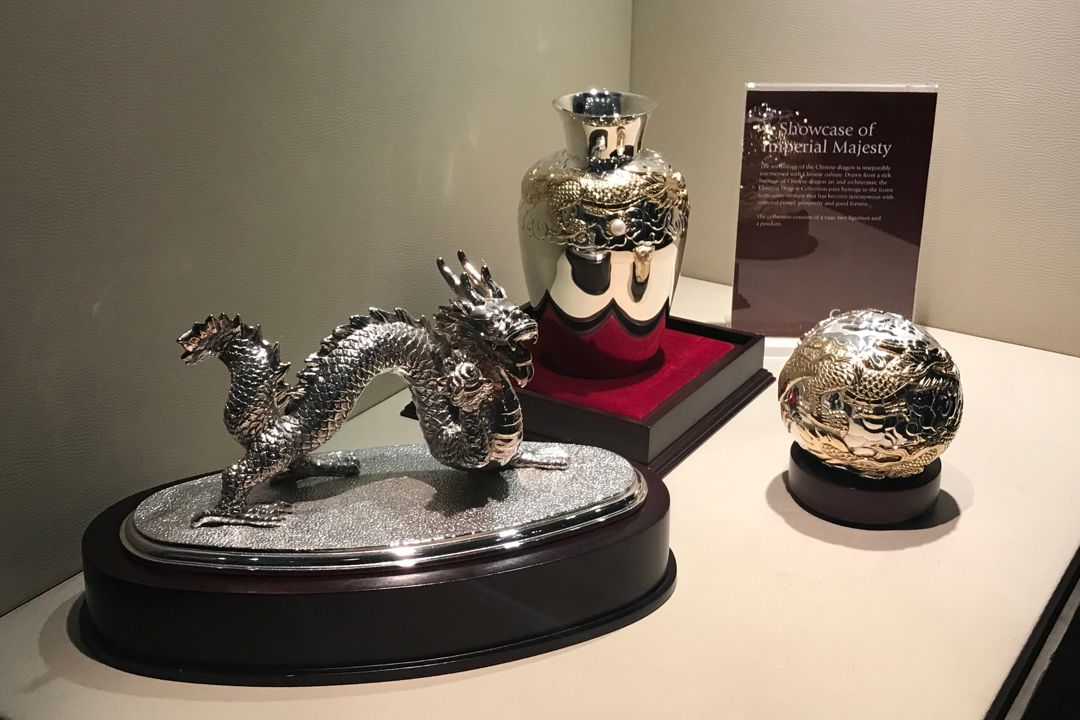
Items from the Comyns Archive.
Next, I had to get down my hands dirty at the Foundry workshop as it encourages its visitors to create their very own pewter accessories with different types of casting, scotching, polishing and finishes. I also created a beautiful pewter craft at the School Of Hard Knocks (I will be writing a separate post on it soon).
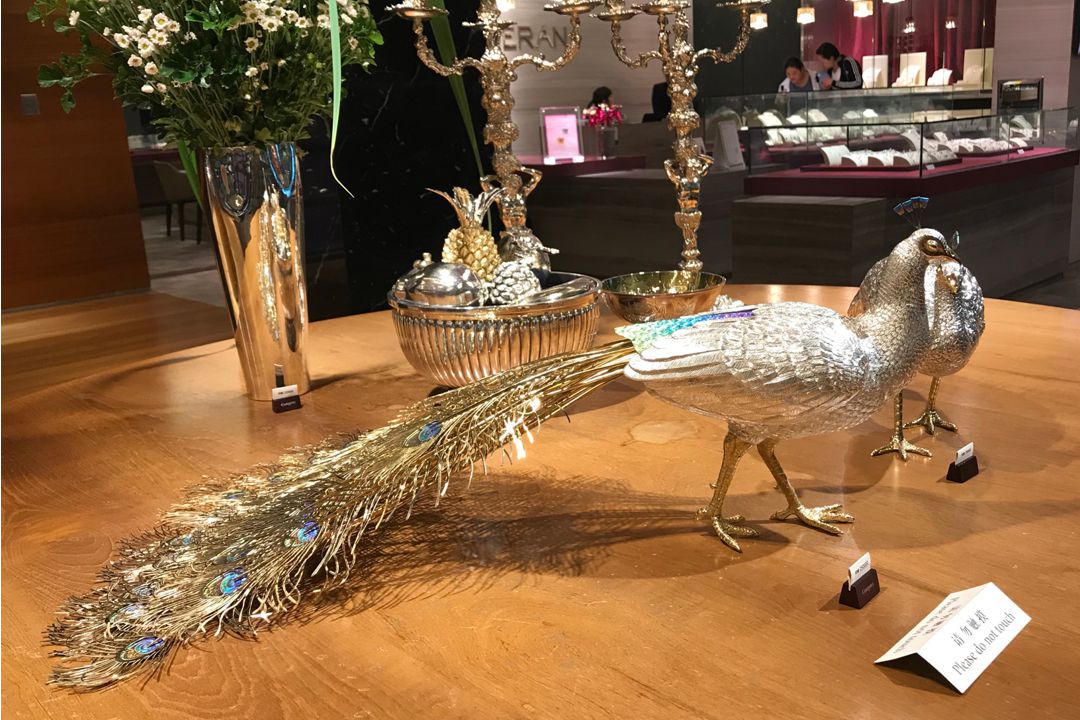
The last stop was at the retail store, where visitors can splurge on beautifully crafted pewter objects.
All in all, the experience was awesome, and a visit to Kuala Lumpur cannot be complete without visiting the Royal Selangor visitor centre. It is a must-see for locals and foreign visitors, and are among the top things to do in Malaysia.
Featured image: The largest pewter tankard in the world (a large drinkware, cylindrical in shape with a single handle), recognized by the Guinness World Records, was made by Royal Selangor in 1985 to commemorate its centenary. It is on display at the Royal Selangor headquarters in Setapak, and is 1.987 meters tall, weighs 1,557 kg and has a capacity of 2,796 liters.

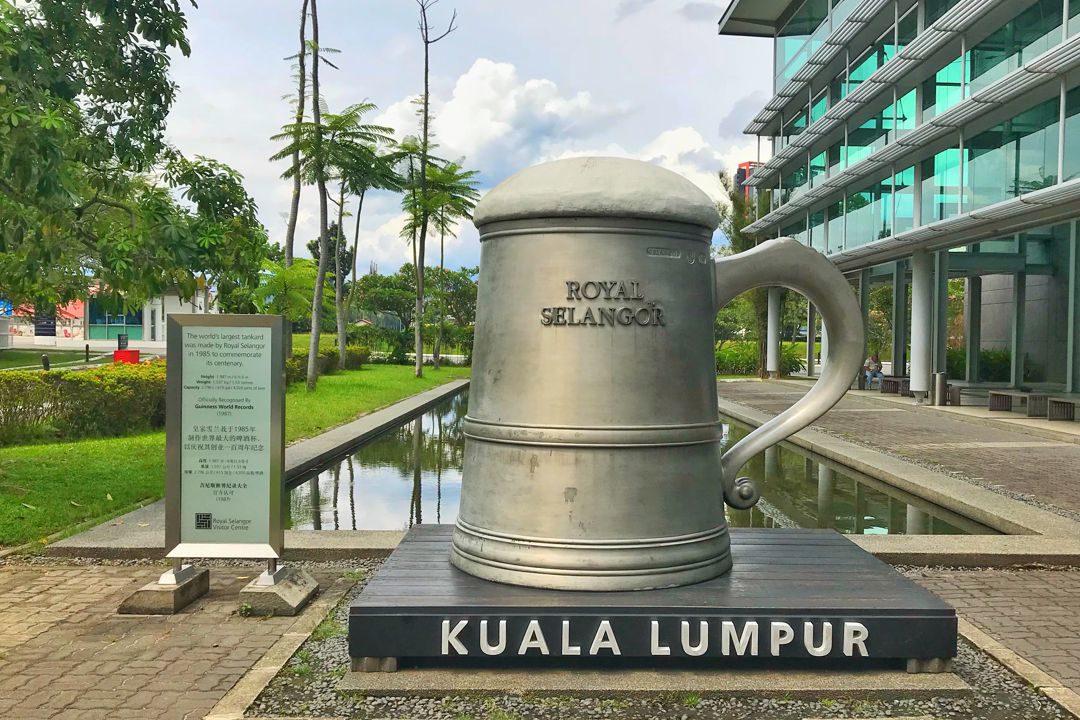

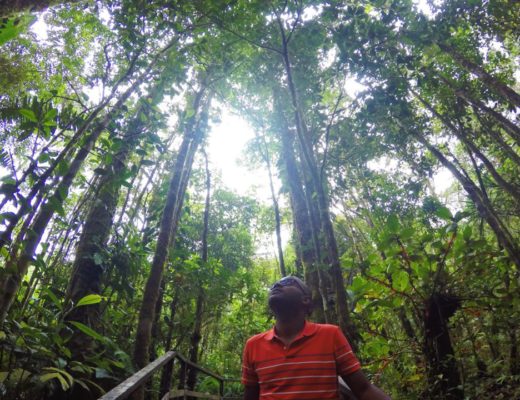
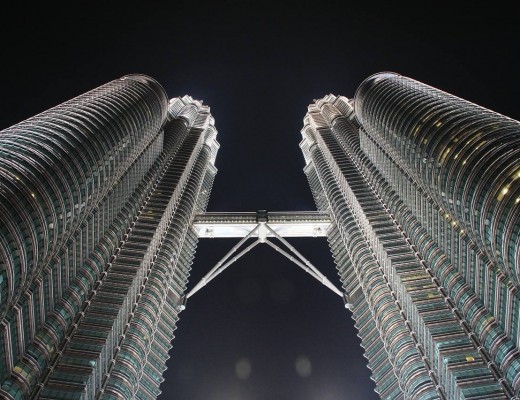
No Comments